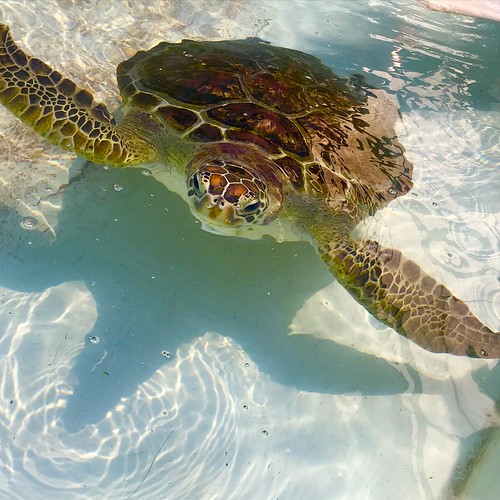
Green Sea Turtle
I have been AWOL for a week. I apologise deeply if not hearing a beep from me made some worry if everything was alright. I know some of you did because I received messages and emails and texts. 2019 proved to be a very hard one with one major thing happening after the other and I just could not handle it in my usual happy go lucky way. I was losing myself little by little, which was a long way coming. Paul intervened and told me I had to pack some some clothes for hot weather and he would abduct me. Everything had been organized, I did not have to do a thing. There was a bunny sitte , I just needed to let go. Not worry and let him take the reigns. I did. Last week we got on a plane to Cairns, Far North Queensland, for a holiday. The first one since about 15 years. We stayed on Fitzroy Island that did nt really have internet and you know what? It was great ! I did a lot of snorkeling, saw lots of corals, fish and turtles ! It was amazing ! We went out to the great barrier reef twice to snorkel and dive, saw more turtles, lots of fish like parrot fish and of course Nemo 😉 and lots and lots more. It felt so good to swim and snorkel again. I love being in the water. It’s the one time in my life I actually feel elegant…lol Anyway. I will load up photos of our adventure and post them on my facebook and Instagram later. The day we got back we were welcomed by severe weather conditions, power outages and the mobile network totally off. We are okay. We are strengthened by the short break and ready to face the world again. I have come to the realization that I need a break every now and again. Recharge the batteries. Create more adventures and have the energy to fight, smile and have fibery fun !


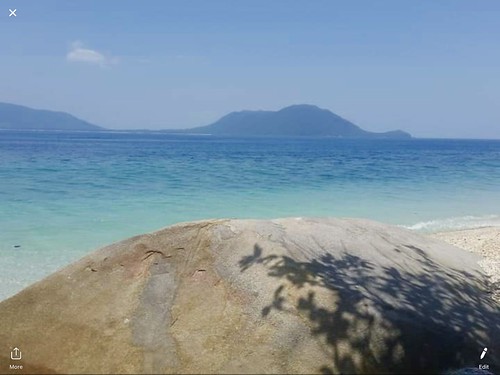
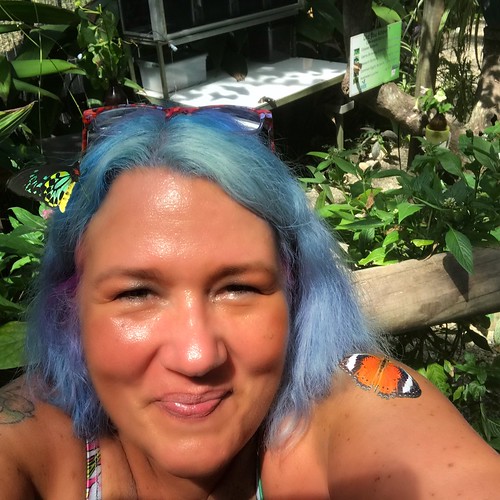




At the Butterfly sanctuary in Kuranda


On the Skyrail with its amazing views!
Today it is time to treat yourself to something special ! Treat yourself to something super amazing to spin: the IxCHeL Tundra blend with yes,,,wait for it: Qiviut from the Norwegian Dovrefjell national park!!
Now it is time to give you some more information on this magical ancient animal ! Qiviut is the name of the wool that comes off of the Musk Ox, a gentle giant of a creature often found in Alaska. Once hunted to the brink of extinction, Musk Ox are now considered to have the most precious, softest fiber in the world. Eight times warmer than wool and finer than cashmere, qiviut is rare and it is one of the most luxurious fibres you can choose for a garment.
The softness of Qiviut is something that must be touched to be believed! Qiviut is not only soft, it is also non-irritating to the skin, and is very durable - garments made from it are worn for years and can be hand washed in mild detergent. It retains warmth even when wet.
The lightweight fibre preserves heat in the winter, while also providing cool, breathable comfort in warmer weather. This fibre has been carefully gathered by hand and no animals were harmed in the gentle shedding of it. This fibre generally sells for anywhere between $35-$56/28grams/oz, and skeins of yarn often sell for over $100-200 each!! Fibre count is 100s+ (12-15 micron)!!!
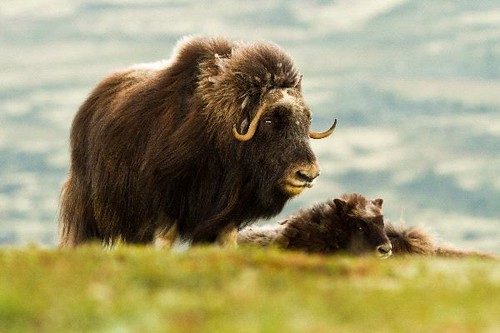
Today it is time to treat yourself to something special ! Treat yourself to something super amazing to spin: the IxCHeL Tundra blend with yes,,,wait for it: Qiviut from the Norwegian Dovrefjell national park!!
Now it is time to give you some more information on this magical ancient animal ! Qiviut is the name of the wool that comes off of the Musk Ox, a gentle giant of a creature often found in Alaska. Once hunted to the brink of extinction, Musk Ox are now considered to have the most precious, softest fiber in the world. Eight times warmer than wool and finer than cashmere, qiviut is rare and it is one of the most luxurious fibres you can choose for a garment.
The softness of Qiviut is something that must be touched to be believed! Qiviut is not only soft, it is also non-irritating to the skin, and is very durable - garments made from it are worn for years and can be hand washed in mild detergent. It retains warmth even when wet.
The lightweight fibre preserves heat in the winter, while also providing cool, breathable comfort in warmer weather. This fibre has been carefully gathered by hand and no animals were harmed in the gentle shedding of it. This fibre generally sells for anywhere between $35-$56/28grams/oz, and skeins of yarn often sell for over $100-200 each!! Fibre count is 100s+ (12-15 micron)!!!

A musk ox mum and her baby
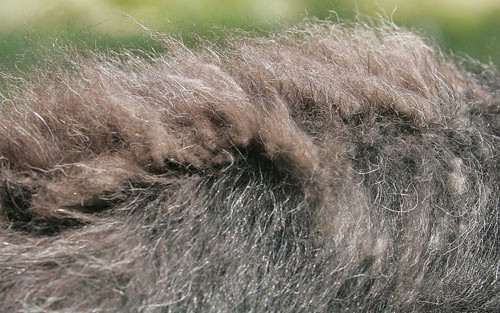

the Qiviut (down of the musk ox) peeking through the guard hairs
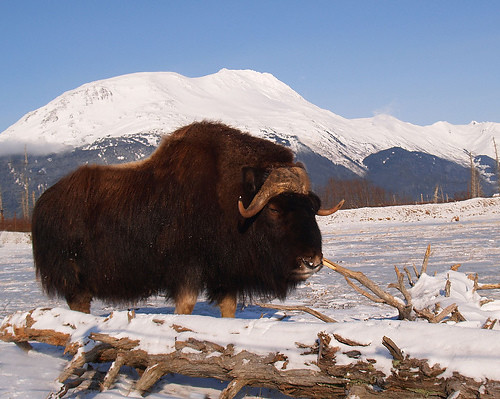

Musk Ox male in Alaska
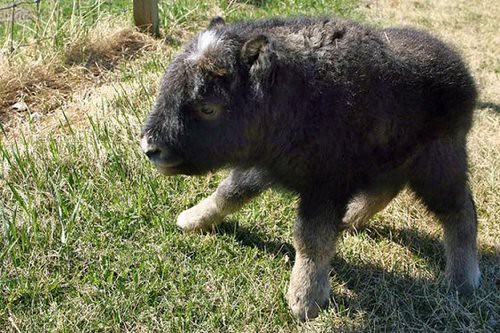

One of the baby musk ox
The mighty muskox (Ovibos moschatu) is a survivor from the ice age. Possessing powerful curved horns, which hang down like side bangs from a helmet-like skullcap, muskoxen are actually more closely related to sheep and goats than to cattle and oxen (although all of the above are members of the Bovidae family).
Adult muskoxen weigh from 180 to 400 kg (400 to 900 pounds) but they look much larger on account of their thick coats and large heads. Once muskoxen proliferated throughout the northern hemisphere alongside woolly mammoths, but hunting and habitat loss caused them to retreat further and further into the remotest parts of the north until the end of the nineteenth century when the animals could only be found in the unpopulated wilderness and empty islands of northern Canada and deep in the arctic vastness of Greenland. In these remote locations tiny herds of one to two dozen muskoxen still subsist on grasses, willows, lichens and moss while contending with terrible arctic predators and fearsome cold.
Fortunately the muskox is provisioned with fearsome horns and doughty neighbours to fend off polar bears and wolves. The herd is capable of assembling in a ring formation with horns outward to stand off wolves and ice bears (although such a strategy works less well against humans with our projectile weapons). To fight the cold, the muskoxen have fat reserves and one of the most remarkable insulating coats in the animal world.
A muskox’s coat is divided into two layers: a long stringy layer of coarse outer wool and an inner layer of soft warm undercoat called qiviut (this Inuit word now primarily denotes muskox wool but it was once also used to refer to similarly soft warm inner down of arctic birds). Qiviut is one of the world’s premier luxury fibres: it is allegedly 8 times more effective at insulation than sheep’s wool and yet is softer than cashmere.
The Musk Ox survived when the other greats of the Pleistocene – woolly mammoth, mastodon, sabertoothed cats, giant sloth – all went away. And it returned to Alaska by way of New York Harbour. Now, it turns out, the musk ox could again be the great survivor in our new Arctic age of extinction. Ross MacPhee, a curator in the department of mammalogy at the American Museum of Natural History in New York City, says the musk ox’s homogenous genetic makeup suggests it has been through population stress before and can survive boom-and-bust cycles.
“What we find with living musk oxen is they’re not exactly clones, but they’re so amazingly similar that there’s only one explanation,” MacPhee says. “And that explanation is that they had to have had a very severe pinch on their populations. We estimate that that happened about ten thousand years ago.” But that doesn’t mean it’s all good news for the cold-weather beast, which is most closely related to goats and sheep and can weigh up to 800 pounds. The pace of these changes could challenge even an animal as resilient as the musk ox, scientists say.
Brendan Kelly, an Arctic ecologist and research scientist for the National Oceanic and Atmospheric Administration, says all Arctic species are currently endangered by the rapid speed of climate change. “For organisms to adapt – whether it’s changing body size, or changing the timing that they have their calves, and hence can match when the plants are most nutritious – it really depends on the rate of the environmental change relative to the generation time of the organism,” Kelly says. “So if there’s a really, really rapid environmental change, it’s very hard for there to be an adaptive response.”
As I was reading about Musk Ox I found out that all of the muskox at the Myskoxcentrum in Härjedalen, Sweden, came from Ryøya, near Tromsø, Norway. What?!? Muskox on Ryøya? I knew about the Dovrefjell group and an attempt to introduce muskox on Svalbard, but I had never heard of a group in northern Norway. The search was on.
It turns out that there is a flock of more 40+ animals now running around free on a small island named Ryøya off the coast of Tromsø. NRK’s Ut i naturen television program made a 24-minute show about “Moskusøya” (“Muskox Island”) in 2006. Unfortunately the show is in Norwegian, but even if you don’t speak Norwegian, it’s still worth watching for a while if you want to see muskox running around and scientists trying to catch them. In the Ut i naturen program, we also get to see some historic television clips from the 1960s when the muskox first came to Troms.
In 1969, 25 muskox calves arrived in northern Norway via boat from Greenland. The idea was to raise muskox for their wool as domesticated livestock. The University of Fairbanks in Alaska had some kind of research project related to muskox husbandry (I haven’t looked into that yet) and the idea was transferred to Norway.
The undercoat wool of muskox, known as qiviut, is a highly valuable wool: it is warmer than wool, finer than cashmere and hypoallergenic. Sounds like the perfect winter clothing material, except that muskox are pretty rare and not widely domesticated – which makes it a very, very expensive material
In 1969, the herd was established at a farm in Bardu with the hope that eventually every farm in the area could have 2-3 muskox for a meaningful supplementary income. But by 1975, calls for the end of muskox experiment were being made. According to media reports, a hunter was killed by a muskox and the muskox population was being devastated by a virus (hmmm, sounds familiar, right?). So in 1976, the herd was moved to northern Troms, and five years later, the Tromsø University is taking care of them to preserve the species.
The Department of Arctic and Marine Biology took over the herd and moved them to Ryøya to study their behaviour and adaptation as arctic animals. Muskox as livestock in Norway didn’t work out, but who knows what the future holds. The Qiviut are still here.
If you watch the TV program, you’ll see that while the scientists herd the muskox to collect measurements and/or for transportation to the overwintering station on the mainland, they quickly pull out the qiviut, which they sell to support their research. Qiviut is a bonus of having muskox in Norway — if you can catch them.
Well , don’t you worry I caught some of it for you !! to support the musk ox population growing not only on the American continent but also in other habitats that are good for them. This will enable the species to grow, get stronger, adapt and hey, probably outlive us all, since they already did that to the woolly mammoth.
Don’t worry, if I EVER find a woolly mammoth, I will share its’ wool with all of you …



Natural

 Rainbow-3left-
Rainbow-3left-

 Gem Corn Magic-2left-
Gem Corn Magic-2left-



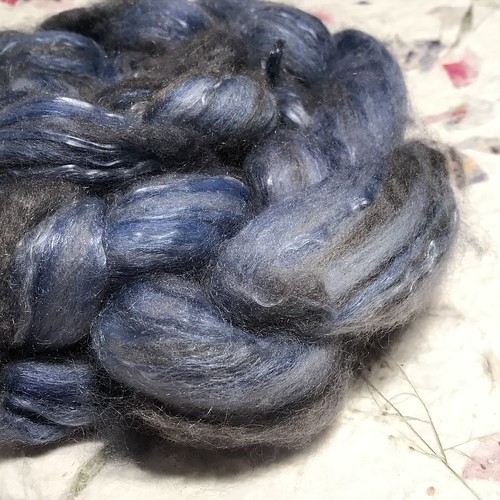

 Sunset Magic-2 left-
Sunset Magic-2 left-

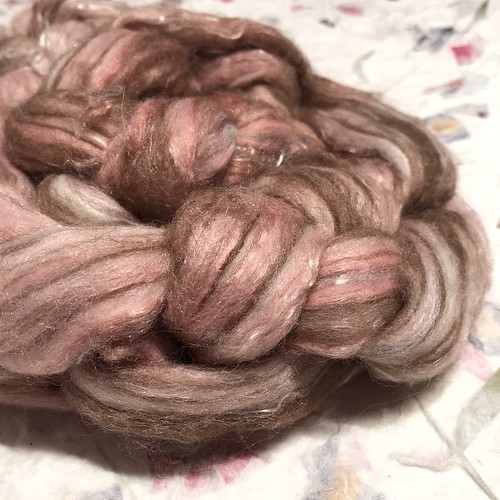



 Rose Velvet-sold-
Rose Velvet-sold-

 Turtle Ocean-sold-
Turtle Ocean-sold-

 Crocodile Rock-sold-
Crocodile Rock-sold-

 Parrot Song-sold-
Parrot Song-sold-

 Zombies n Mermaids-1left-
Zombies n Mermaids-1left-
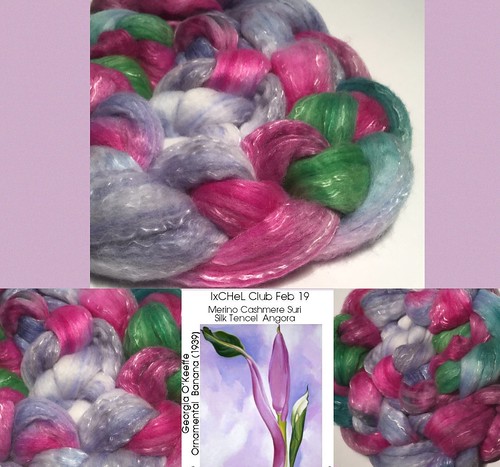
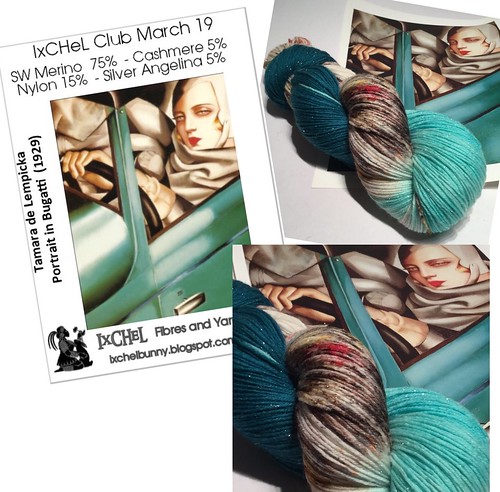 March Yarn Club
March Yarn Club
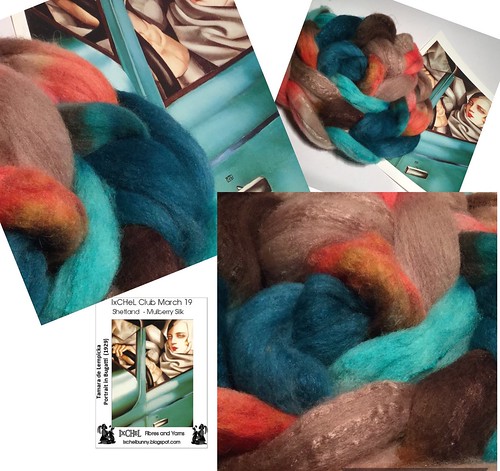 March Fibre Club
March Fibre Club
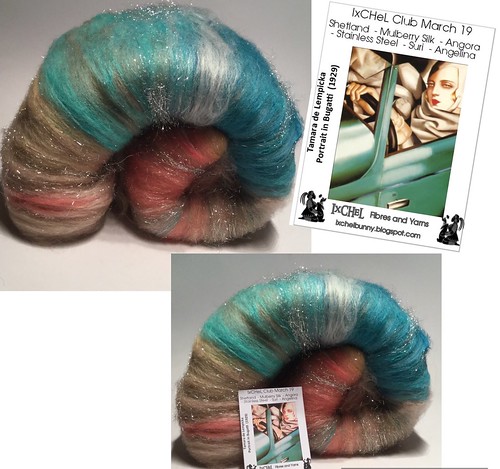 March Batt Club
March Batt Club
 April Fibre Club
April Fibre Club
 April yarn Club
April yarn Club
 April Batt Club
April Batt Club
 June Batt, yarn and fibre Club
June Batt, yarn and fibre Club
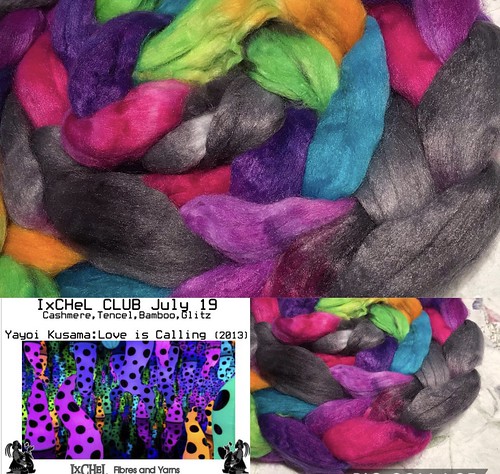 July Fibre Club
July Fibre Club
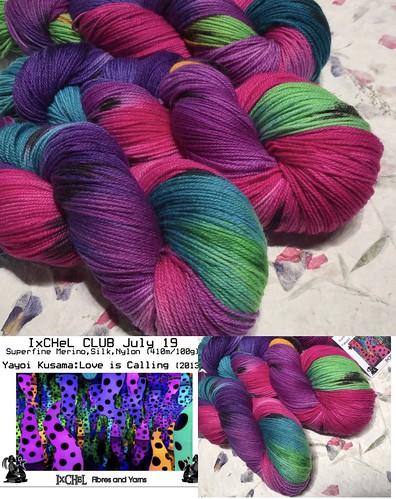 July Yarn Club
July Yarn Club
 July Batt Club
July Batt Club
 August Fibre Club
August Fibre Club
 August Yarn Club
August Yarn Club
 August Batt Club
August Batt Club
 September Fibre Club
September Fibre Club
 September Yarn Club
September Yarn Club
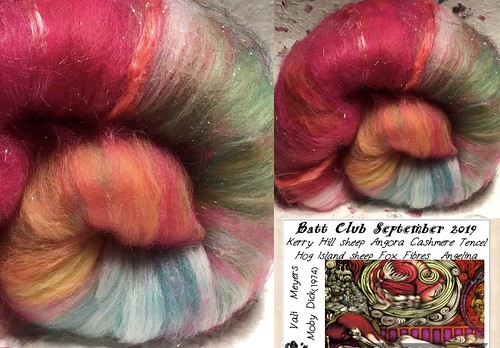 September Batt Club
September Batt Club
 October Fibre Club
October Fibre Club
 October Yarn Club
October Yarn Club
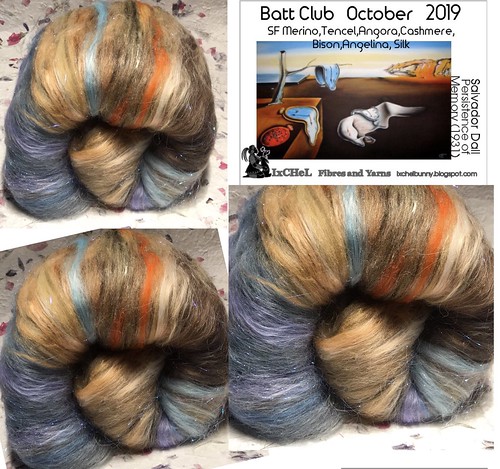 October Batt Club
October Batt Club


 Kata Tjuta
Kata Tjuta
(an intense pure red that goes well with the Kookaburra and the Wattle and the Amethyst colourway and soooooomany others)


 Kookaburra
Kookaburra
(a beautiful silver grey with ochre accents that complement the dingo colourway)

 Dingo
Dingo
( A beautiful warm honey ochre with pops of royal bluebell, kingfisher and kangaroo paw)

 Grevillea
Grevillea
(a gorgeous raspberry base with pops of royal bluebell, flowering gum, grey and daintree)


 Fern Forest
Fern Forest
( a deep forest green with accents of bright red, dusky purple and daintree) )

 Jacarandah
Jacarandah
( a fabulous deep purple with accents of royal bluebell, daintree, grevillea and kingfisher )

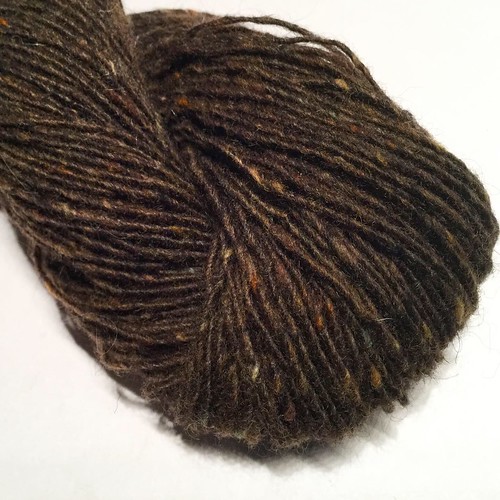 Wombat
Wombat
( a fabulous deep walnut brown with accents of dingo and kookaburra)

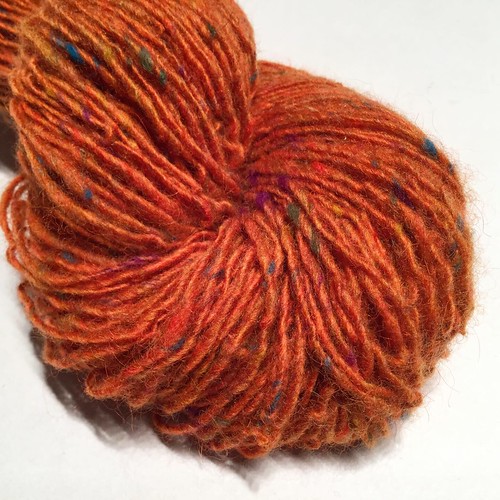 Kangaroo Paw
Kangaroo Paw
( a fabulous warm orange with accents of fern forest, royal bluebell and grevillea and dingo )


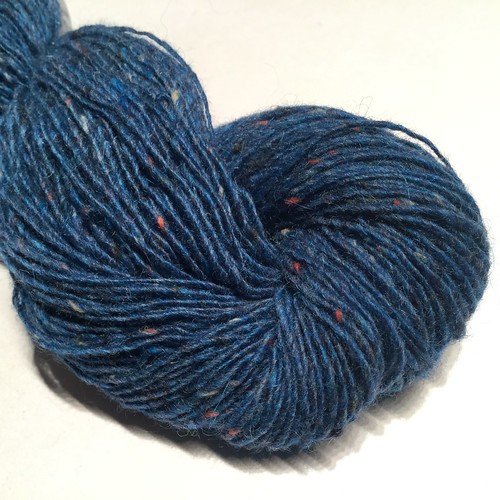 Royal Bluebell
Royal Bluebell
( a deep blue with accents of flowering gum, kookaburra and fern forest )

 Wallaby
Wallaby
( a warm light brown with accents of soft blue and kookaburra)

 Daintree ( a soft green with accents of fern forest and dingo)
Daintree ( a soft green with accents of fern forest and dingo)
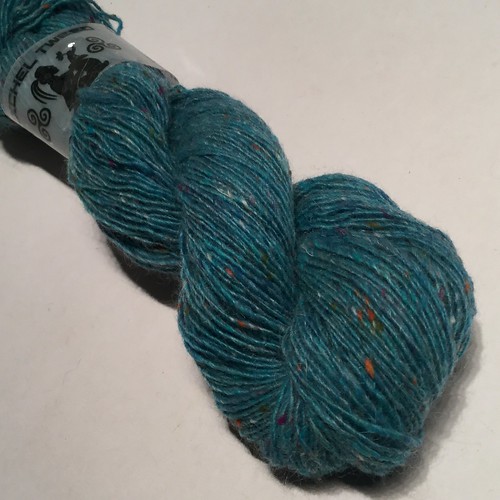
 Kingfisher
Kingfisher
( a fabulous Turquoise blue with accents of fern forest, kangaroo paw, Jacaranda and Grevillea)
Get ready for lots of new goodies that are planned !!!
And keep your eyes out for any news on the ixchelbunny Instagram feed and the IxCHeL facebook page!!

The mighty muskox (Ovibos moschatu) is a survivor from the ice age. Possessing powerful curved horns, which hang down like side bangs from a helmet-like skullcap, muskoxen are actually more closely related to sheep and goats than to cattle and oxen (although all of the above are members of the Bovidae family).
Adult muskoxen weigh from 180 to 400 kg (400 to 900 pounds) but they look much larger on account of their thick coats and large heads. Once muskoxen proliferated throughout the northern hemisphere alongside woolly mammoths, but hunting and habitat loss caused them to retreat further and further into the remotest parts of the north until the end of the nineteenth century when the animals could only be found in the unpopulated wilderness and empty islands of northern Canada and deep in the arctic vastness of Greenland. In these remote locations tiny herds of one to two dozen muskoxen still subsist on grasses, willows, lichens and moss while contending with terrible arctic predators and fearsome cold.
Fortunately the muskox is provisioned with fearsome horns and doughty neighbours to fend off polar bears and wolves. The herd is capable of assembling in a ring formation with horns outward to stand off wolves and ice bears (although such a strategy works less well against humans with our projectile weapons). To fight the cold, the muskoxen have fat reserves and one of the most remarkable insulating coats in the animal world.
A muskox’s coat is divided into two layers: a long stringy layer of coarse outer wool and an inner layer of soft warm undercoat called qiviut (this Inuit word now primarily denotes muskox wool but it was once also used to refer to similarly soft warm inner down of arctic birds). Qiviut is one of the world’s premier luxury fibres: it is allegedly 8 times more effective at insulation than sheep’s wool and yet is softer than cashmere.
The Musk Ox survived when the other greats of the Pleistocene – woolly mammoth, mastodon, sabertoothed cats, giant sloth – all went away. And it returned to Alaska by way of New York Harbour. Now, it turns out, the musk ox could again be the great survivor in our new Arctic age of extinction. Ross MacPhee, a curator in the department of mammalogy at the American Museum of Natural History in New York City, says the musk ox’s homogenous genetic makeup suggests it has been through population stress before and can survive boom-and-bust cycles.
“What we find with living musk oxen is they’re not exactly clones, but they’re so amazingly similar that there’s only one explanation,” MacPhee says. “And that explanation is that they had to have had a very severe pinch on their populations. We estimate that that happened about ten thousand years ago.” But that doesn’t mean it’s all good news for the cold-weather beast, which is most closely related to goats and sheep and can weigh up to 800 pounds. The pace of these changes could challenge even an animal as resilient as the musk ox, scientists say.
Brendan Kelly, an Arctic ecologist and research scientist for the National Oceanic and Atmospheric Administration, says all Arctic species are currently endangered by the rapid speed of climate change. “For organisms to adapt – whether it’s changing body size, or changing the timing that they have their calves, and hence can match when the plants are most nutritious – it really depends on the rate of the environmental change relative to the generation time of the organism,” Kelly says. “So if there’s a really, really rapid environmental change, it’s very hard for there to be an adaptive response.”
As I was reading about Musk Ox I found out that all of the muskox at the Myskoxcentrum in Härjedalen, Sweden, came from Ryøya, near Tromsø, Norway. What?!? Muskox on Ryøya? I knew about the Dovrefjell group and an attempt to introduce muskox on Svalbard, but I had never heard of a group in northern Norway. The search was on.
It turns out that there is a flock of more 40+ animals now running around free on a small island named Ryøya off the coast of Tromsø. NRK’s Ut i naturen television program made a 24-minute show about “Moskusøya” (“Muskox Island”) in 2006. Unfortunately the show is in Norwegian, but even if you don’t speak Norwegian, it’s still worth watching for a while if you want to see muskox running around and scientists trying to catch them. In the Ut i naturen program, we also get to see some historic television clips from the 1960s when the muskox first came to Troms.
In 1969, 25 muskox calves arrived in northern Norway via boat from Greenland. The idea was to raise muskox for their wool as domesticated livestock. The University of Fairbanks in Alaska had some kind of research project related to muskox husbandry (I haven’t looked into that yet) and the idea was transferred to Norway.
The undercoat wool of muskox, known as qiviut, is a highly valuable wool: it is warmer than wool, finer than cashmere and hypoallergenic. Sounds like the perfect winter clothing material, except that muskox are pretty rare and not widely domesticated – which makes it a very, very expensive material
In 1969, the herd was established at a farm in Bardu with the hope that eventually every farm in the area could have 2-3 muskox for a meaningful supplementary income. But by 1975, calls for the end of muskox experiment were being made. According to media reports, a hunter was killed by a muskox and the muskox population was being devastated by a virus (hmmm, sounds familiar, right?). So in 1976, the herd was moved to northern Troms, and five years later, the Tromsø University is taking care of them to preserve the species.
The Department of Arctic and Marine Biology took over the herd and moved them to Ryøya to study their behaviour and adaptation as arctic animals. Muskox as livestock in Norway didn’t work out, but who knows what the future holds. The Qiviut are still here.
If you watch the TV program, you’ll see that while the scientists herd the muskox to collect measurements and/or for transportation to the overwintering station on the mainland, they quickly pull out the qiviut, which they sell to support their research. Qiviut is a bonus of having muskox in Norway — if you can catch them.
Well , don’t you worry I caught some of it for you !! to support the musk ox population growing not only on the American continent but also in other habitats that are good for them. This will enable the species to grow, get stronger, adapt and hey, probably outlive us all, since they already did that to the woolly mammoth.
Don’t worry, if I EVER find a woolly mammoth, I will share its’ wool with all of you …

A Qiviut cowl, the warmest and softest thing you will ever wear
So, this week it is Qiviut !!!!
Only a small amount available so please don’t wait too long for this amazing blend that spins like a dream !
Only a small amount available so please don’t wait too long for this amazing blend that spins like a dream !
So, here it is: a Qiviut blend to cuddle up to tonight ! There’s still time to sign up for the IxCHeL Clubs starting again in January ! All the info for joining the clubs are below.
Have a fun weekend with lots of fibre play and love!!
Have a fun weekend with lots of fibre play and love!!
All my contact details and "HOW TO ORDER" are also to be found at the end of this week’s blog entry. And please remember: Every time you buy from a small business or a farm you are not only getting something unique and handmade but you are supporting so much more !
IxCHeL Tundra Tops
50 grams AU$25
Qiviut 25% , Cashmere, Silk, Tencel, superfine merino, English Angora Bunny
Qiviut 25% , Cashmere, Silk, Tencel, superfine merino, English Angora Bunny


Natural

 Rainbow-3left-
Rainbow-3left-
 Gem Corn Magic-2left-
Gem Corn Magic-2left-

Starry Night-sold-


dyed with Japanese Indigo 3 left-

 Sunset Magic-2 left-
Sunset Magic-2 left-

Rose Quartz-sold-


Velvet-2left-

 Rose Velvet-sold-
Rose Velvet-sold-
 Turtle Ocean-sold-
Turtle Ocean-sold-
 Crocodile Rock-sold-
Crocodile Rock-sold-
 Parrot Song-sold-
Parrot Song-sold-
 Zombies n Mermaids-1left-
Zombies n Mermaids-1left-IxCHeL Club Sign ups for the LAST trimester of 2019 are OPEN!!!
Here is an overview of all the clubs shipped out to all the members in 2018 and most of 2019.
Teasers of the latest clubs are always be posted on my Instagram, Facebook and Twitter, so follow me there as well: I am ixchelbunny
If you would like to join for the next round just PM me.
Here is a photo compilation of the 2018/2019 clubs to give you an idea what the "Art Journey" Theme has been all about : The interpretation of art into fibre and yarn.
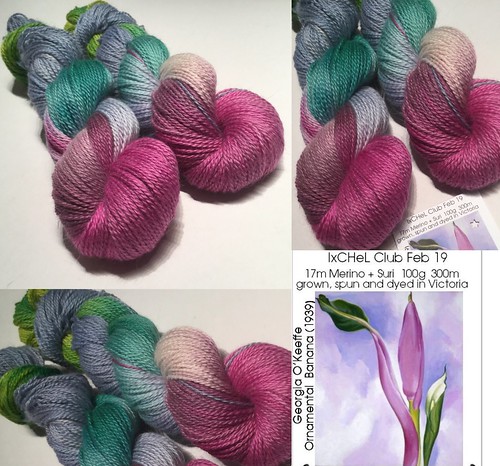 |

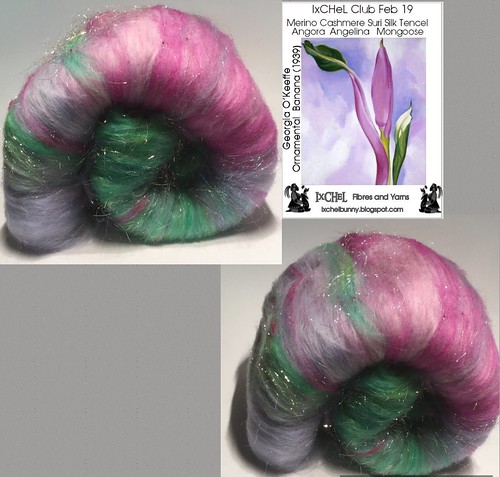 |
 March Yarn Club
March Yarn Club March Fibre Club
March Fibre Club March Batt Club
March Batt Club April Fibre Club
April Fibre Club April yarn Club
April yarn Club April Batt Club
April Batt Club June Batt, yarn and fibre Club
June Batt, yarn and fibre Club July Fibre Club
July Fibre Club July Yarn Club
July Yarn Club July Batt Club
July Batt Club August Fibre Club
August Fibre Club August Yarn Club
August Yarn Club August Batt Club
August Batt Club September Fibre Club
September Fibre Club September Yarn Club
September Yarn Club September Batt Club
September Batt Club October Fibre Club
October Fibre Club October Yarn Club
October Yarn Club October Batt Club
October Batt ClubIxCHeL Fibre Club January, February and March 2020
The subscription is for a period of three months and you will receive one special hand dyed top/roving per month to the value of +/- AU$25
All the tops will be hand dyed and will be especially made for the members of IxCHeL Fibre Club ! Price to join the IxCHeL Fibre Club #42 and receive your special hand dyed top :)) for three months (January, February and March 2020) is AU$75 + postage (parcel post or airmail). AND there are good value double and triple serves available !!!
For Australia : single serve $75+$30 postage (parcel post), double serve $144+$30 (save $6) or triple serves $215 (save $9!) + postage
For USA + Canada: single serve AU$75+AU$57 (Airmail) double serve AU$144+AU$57; triple serve $215 (save $9) + postage
For UK,Europe, rest of the world: Single serve AU$72+AU$69 (airmail) Double serve AU$144+AU$69; triple serve $215 (save $9) + postage
For Asia: Single serve AU$72+AU$50 (airmail) Double serve AU$144+AU$50; triple serves $215 (save $9) + postage
If you want to receive a fibre surprise every month then join the IXCHEL FIBRE CLUB #42 now. Numbers are strictly limited ! The January 2020 Club is going to be shipped out end of January, the February club mid February and the March club early March. Payment via direct deposit or credit card or paypal. Just PM or email me your details.
The IxCHeL Yarn Clubs January, February and March 2020
Every month for three months (January, February and March 2020) you will receive: enough hand dyed luscious yummy yarn to make a pair of socks or a lush shawl or scarf of course! (the hand dyed yarn will be exclusive for the Ixchelbunny SOCK-IT-TO-ME Yarn CLUB and will range from a sockweight yarn (a 4ply/fingering weight yarn) or an 8ply / DK weight enough to make a pair of socks ; Every month a sock or scarf pattern, tips and instructions ! Now is that GOOD or is that GOOD ??!
I will even offer a double serve for those of you who like their socks or scarves extra long !
For Australia : single serve $90+$30 postage (parcel post) double serve $165( save $15!!) +$30 postage
For USA + Canada: single serve AU$90+AU$57 (Airmail) double serve $165 (Save $15!!) +AU$57
For USA + Canada: single serve AU$90+AU$57 (Airmail) double serve $165 (Save $15!!) +AU$57
For UK,Europe, rest of the world: Single serve AU$90+AU$69 (airmail) Double serve $165 (Save $15!!) +AU$69
For Asia: Single serve AU$90+AU$50 (airmail) Double serve $165 (= Save $15!!!) +AU$50
Numbers are strictly limited !
Payment via direct deposit or credit card or paypal . Just PM or email me your details
By the way: you don’t HAVE to knit socks if you don’t want to.. the hand dyed yarn is amazingly nice for scarves, cowls, beanies and even tops ! Anything goes . The January 2020 Club is going to be shipped out end of January, the February club mid February and the March club early March. Payment via direct deposit or credit card or paypal. Just PM or email me your details
IxCHeL Funky Bunny Batt Clubs January, February and March 2020
Here are all the details. Just pm me when you have any questions or want to be part of the funky bunny batt club Movement ;-) Welcome to the blingy dark side ;-D
The subscription is for a period of three months and you will receive one special hand dyed funky bunny batt per month to the value of AU$40 or more .
The batts will range in weight from 140grams to 170grams with luxury fibres like camel , angora, cashmere, silk, yak, llama even wallaby and bison and rare sheep breeds !!!! All the batts will be hand dyed and will be especially made for the members of IxCHeL funky bunny Club ! Every month you will receive a HUGE luxury funky bunny batt !
Sign up now and you will receive an IxCHeL Hand dyed , super luxurious funky bunny batt for January, February and March 2020
Price to join the IxCHeL Funky bunny for three months is :
For Australia : $114+$30 postage (parcel post)
For USA + Canada: AU$114+AU$57 (Airmail)
For USA + Canada: AU$114+AU$57 (Airmail)
For UK,Europe, rest of the world: AU$114+AU$69 (airmail)
For Asia: AU$114+AU$50 (airmail)
If you want to receive a fibre surprise every month then join the IXCHEL FUNKY BUNNY BATT CLUB now.
Numbers are strictly limited !
The January 2020 Club is going to be shipped out end of January, the February club mid February and the March club early March. Payment via direct deposit or credit card or paypal. Just PM or email me your details.
To become a member just email me on ixchel at rabbit dot com dot au or message me on facebook or Instagram. More on how to order the clubs and anything from this update later in the blog in the section “how to order”
IxCHeL Tweed fingering weight yarn
Super soft lambswool 70% and Kid Mohair 30%
Spun singles, fingering or sock weight yarn
+/- 200meters/218yards
50grams 1.76oz
AU$16
More colours will be available soon, including a Princess Bride colour range AND a naturally dyed and eco printed colour range ! Stay Tuned !

Wattle
(A beautiful sunshine yellow that goes so well with the kookaburra the silver grey)
(A beautiful sunshine yellow that goes so well with the kookaburra the silver grey)

 Kata Tjuta
Kata Tjuta (an intense pure red that goes well with the Kookaburra and the Wattle and the Amethyst colourway and soooooomany others)

Amethyst
(a bright purple colourway with bright red flecks)
(a bright purple colourway with bright red flecks)

 Kookaburra
Kookaburra(a beautiful silver grey with ochre accents that complement the dingo colourway)

 Dingo
Dingo( A beautiful warm honey ochre with pops of royal bluebell, kingfisher and kangaroo paw)

 Grevillea
Grevillea(a gorgeous raspberry base with pops of royal bluebell, flowering gum, grey and daintree)

Flowering Gum
( a gorgeous medieval warm red with bright red, kookaburra and fern forest accents)
( a gorgeous medieval warm red with bright red, kookaburra and fern forest accents)

 Fern Forest
Fern Forest ( a deep forest green with accents of bright red, dusky purple and daintree) )

 Jacarandah
Jacarandah ( a fabulous deep purple with accents of royal bluebell, daintree, grevillea and kingfisher )

 Wombat
Wombat( a fabulous deep walnut brown with accents of dingo and kookaburra)

 Kangaroo Paw
Kangaroo Paw ( a fabulous warm orange with accents of fern forest, royal bluebell and grevillea and dingo )

isn’t it gorgeous how the Kangaroo paw knits up?! )

 Royal Bluebell
Royal Bluebell ( a deep blue with accents of flowering gum, kookaburra and fern forest )

 Wallaby
Wallaby( a warm light brown with accents of soft blue and kookaburra)

 Daintree ( a soft green with accents of fern forest and dingo)
Daintree ( a soft green with accents of fern forest and dingo)
 Kingfisher
Kingfisher ( a fabulous Turquoise blue with accents of fern forest, kangaroo paw, Jacaranda and Grevillea)
Pm me if you would like to give some of these amazing new IxCHeL Tweed yarns or the Buddhas tears tea a good home or if you want to sign up for the IxCHeL Clubs ! Enjoy looking and have a fun weekend !
Please don't hesitate to contact me at any time if you have any questions okay? Always happy to enable. All my contact details are to be found at the end of this week’s blog entry.
IxCHeL Buddhas tears tea
carefully packed and presented in a special organza gift bag
50g/ AU$19
Two organically grown superior green tea leaves and a jasmine bud are plucked from the best quality tea bushes and mixed with delicately smelling jasmine blossoms, then sieved and hand rolled on bamboo trays, into small balls while the leaves are not quite dry.
The leaf captures the fine jasmine aroma and releases it during brewing, giving a champagne coloured cup.
Brewing: 1-3 minutes 75-80degC ,
4 pearls/cup,
you can reinfuse 3-4 times so those 4 pearls last a looong time

 Carefully handrolled tea
Carefully handrolled tea

Enjoy the tea over and over again, by adding hot water again and again
All my contact details are here:
Please don't hesitate to contact me at any time if you have any questions okay? Always happy to enable. All my contact details are to be found at the end of this week’s blog entry.
Have a fun weekend !!!
How To Order:
1. You can email me on ixchel at rabbit dot com dot au or ixchelbunny at yahoo dot com dot au
2. Message me on facebook or
3. Message me on www.ravelry.com where I am ixchelbunny.
4. message me on Instagram where I am @ixchelbunny
I will email you right back with all your order details and payment methods.
Any questions? Any custom orders for yarn or dyeing fibre? : Please don’t hesitate to ask! Always happy to enable.
Dates to put in your Calendar
 |

Carefully handrolled tea
 |
Enjoy the tea over and over again, by adding hot water again and again
All my contact details are here:
Have a fun weekend !!!
How To Order:
1. You can email me on ixchel at rabbit dot com dot au or ixchelbunny at yahoo dot com dot au
2. Message me on facebook or
3. Message me on www.ravelry.com where I am ixchelbunny.
4. message me on Instagram where I am @ixchelbunny
I will email you right back with all your order details and payment methods.
Any questions? Any custom orders for yarn or dyeing fibre? : Please don’t hesitate to ask! Always happy to enable.
2. Message me on facebook or
3. Message me on www.ravelry.com where I am ixchelbunny.
4. message me on Instagram where I am @ixchelbunny
I will email you right back with all your order details and payment methods.
Any questions? Any custom orders for yarn or dyeing fibre? : Please don’t hesitate to ask! Always happy to enable.
Dates to put in your Calendar
Something Big is coming in December !
and it’s not Santa aloneGet ready for lots of new goodies that are planned !!!
And keep your eyes out for any news on the ixchelbunny Instagram feed and the IxCHeL facebook page!!
RABBIT ON !
((hugs))
Charly

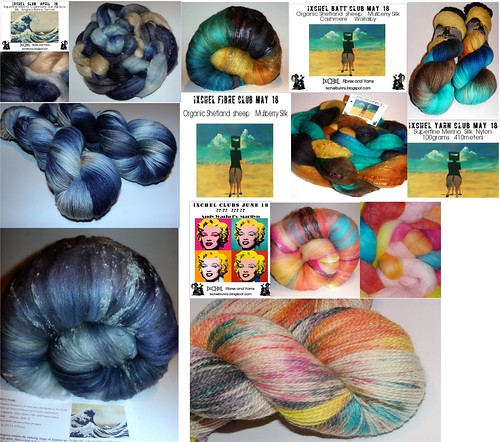

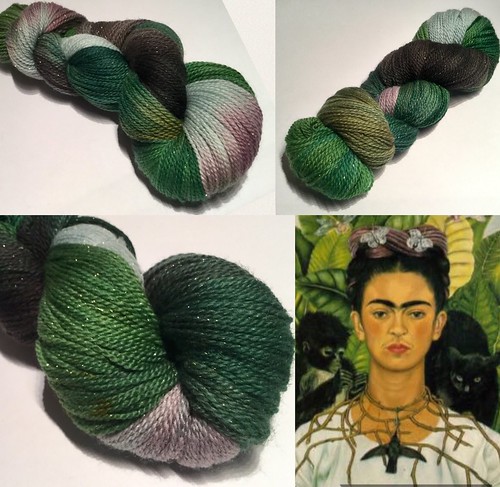
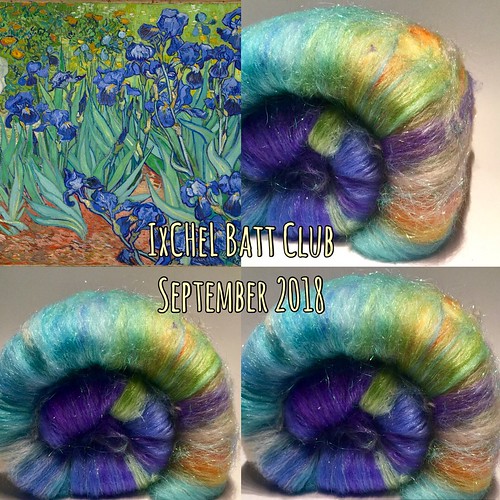
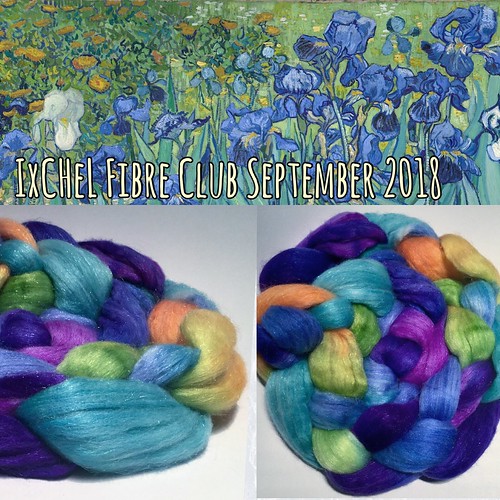










No comments:
Post a Comment